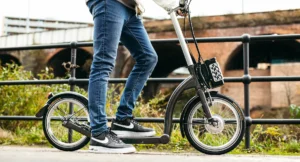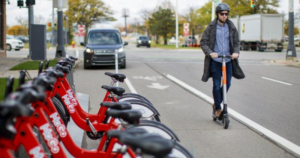In the quest for efficient and sustainable urban mobility, personal electric transporters have emerged as a transformative solution, redefining the way we move through our cities.
These compact, electric-powered devices offer a personalized and eco-friendly alternative to traditional modes of transportation, empowering individuals to navigate urban environments with ease.
Let’s delve into the features that make personal electric transporters a beacon of innovation in modern commuting.
Compact and Portable Design
At the forefront of personal electric transporters is their compact and portable design. Whether it’s electric skateboards, electric scooters, or self-balancing unicycles, these devices are engineered for convenience and portability.
Their lightweight and foldable structures make them easy to carry and store, providing urban dwellers with a versatile and practical solution for the challenges of last-mile commuting or navigating crowded city streets.
Eco-Friendly Commuting
Personal electric transporters operate on electric power, contributing to a cleaner and greener urban environment.
By eliminating the need for fossil fuels, these devices produce zero emissions during operation, reducing air pollution and carbon footprints.
As sustainability becomes a focal point in urban planning, personal electric transporters represent a conscious choice for individuals seeking eco-friendly alternatives for their daily commute.
Last-Mile Connectivity
One of the key advantages of personal electric transporters lies in their ability to bridge the gap in last-mile connectivity.
As commuters navigate from public transportation hubs to their final destinations, these devices offer a quick and efficient means of covering short distances.
By reducing reliance on cars for short trips, personal electric transporters alleviate traffic congestion and contribute to a more streamlined and sustainable urban transportation system.
Technological Innovation
Personal electric transporters are not just about compact design and eco-friendliness; they are also hubs of technological innovation.
Smart connectivity features, regenerative braking systems, and advanced battery management are becoming standard in these devices.
Integration with smartphone apps allows riders to monitor performance, track routes, and even control certain functionalities, adding a layer of sophistication to the overall user experience.
Safety and Regulation
As personal electric transporters gain popularity, safety concerns and regulatory frameworks have become important considerations.
Manufacturers are investing in safety features such as lights, brakes, and stability controls to enhance rider safety.
Additionally, cities are adapting regulations to accommodate these emerging forms of transportation, striking a balance between promoting innovation and ensuring public safety.
Future Prospects
The future of personal electric transporters looks promising, with ongoing developments in battery technology, design, and connectivity.
As more individuals embrace these devices as a practical and eco-conscious means of commuting, it is likely that infrastructure and regulations will evolve to support their widespread adoption.
The personal electric transporter is not just a trend but a transformative force in shaping the future of urban mobility.
Conclusion
Personal electric transporters represent a paradigm shift in how we envision and experience urban transportation.
With their emphasis on sustainability, efficiency, and technological innovation, these devices are more than just personal vehicles; they are symbols of a progressive and dynamic approach to urban mobility.
As cities adapt to accommodate these innovations, personal electric transporters are poised to play a pivotal role in the ongoing evolution of how we move through our urban landscapes.



